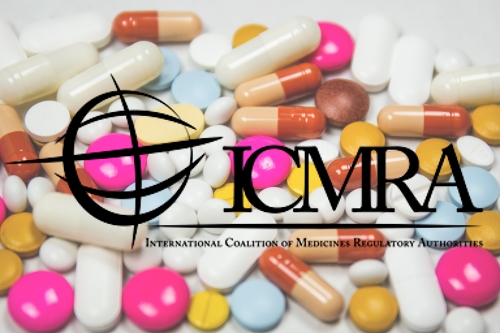
The International Coalition of Medicines Regulatory Authorities (ICMRA) has called for global interoperability of medicine track and trace systems in a bid to improve cross-border monitoring of fake medicines.
The Coalition’s position, published in a document as part of ICMRA’s supply chain integrity project, points to the current state of affairs where various track and trace systems are being implemented at national or regional level but do not take into account the international trade of medicines and the different systems and requirements.
As such, the ICMRA has produced recommendations and strategic direction to improve the alignment of the existing and planned track and trace systems to allow for interoperability.
“Differences in national and regional T&T systems add additional complexity in tracking products globally in the event of a defect, a pharmacovigilance problem or a falsified product. It also imposes an additional burden on the industry which needs to adapt to multiple national or regional T&T requirements for product distributions,” the ICMRA says. “The rapid exchange of regulatory information among national authorities is integral to the protection of supply chain integrity and to the protection of patient safety… In the absence of global alignment on technical recommendations, there is a proliferation of different T&T systems, which impacts interoperability.”
The EU and US are both currently implementing track and trace (T&T) systems. In the EU, the Falsified Medicines Directive requires pharmaceutical manufacturers apply safety features to medicines packs including a 2D barcode and a tamper-proof security seal to ensure authenticity and supply chain traceability. In the USA, the Drug Supply Chain Security Act requires an electronic track and trace system featuring a product identifier, serial number, lot number and expiration date using a 2D datamatrix barcode to monitor drug distribution in the US.
Argentina, Brazil, Canada, Italy and Japan are also implementing systems, while Australia, Costa Rica, Fiji, Switzerland and Uruguay have no plans for T&T systems, the ICMRA says.
According to the body, interoperability – the ability of T&T systems to exchange information and make use of that received from other systems – is “paramount to achieve outcomes associated to T&T systems”. The body argues that global advantages of T&T systems only go as far as the level of interoperability put in place by different national and regional authorities.
Once interoperable, T&T systems should complement other systems such as the WHO Drug Alert System or adverse drug reaction monitoring and reporting systems, the ICMRA says.
“Interoperability of national and regional T&T systems could allow traceability of products and batches throughout the global supply-chain and minimise patients’ exposure to risk associated with defective health products through immediate notification of products and batch numbers related to a serious safety incident throughout the interoperable systems.”
The body notes that interoperability among T&T systems is dependent on the establishment of a set of minimal common global features or standards, adding that the challenges for an interoperable system are generally technical in nature but that political consensus is also required.
To enable interoperability between T&T systems, the ICMRA recommends that: every medicinal product on the market carry common standardised information including an International Common Product Identifier based on the active ingredient rather than brand name, an International Batch Number and expiry date; common global data coding standards be used to identify, capture and share data, and should be based on a single internationally agreed data coding standard; and the same kind of data carrier be used by T&T systems, such as the 2D datamatrix code, which is already in use in most of the current and planned T&T systems.
The ICMRA recognises that existing systems cannot be easily modified to comply with these recommendations and suggests that solutions should be identified. The ICMRA proposes that it identifies a technical expert body to enable implementation of the recommendations.
Last year, a new standard for packaging line serialisation was released. Developed by the industry-back Open Serialisation Communication Standard (OPEN-SCS) group and called Packaging Serialisation Specification (PSS) 1.0, the new standard aims to enable efficient, flexible and scalable track and trace programmes that can be integrated across diversified serialisation systems and intelligent devices. PSS 2.0 is due for publication this year.
©
SecuringIndustry.com





